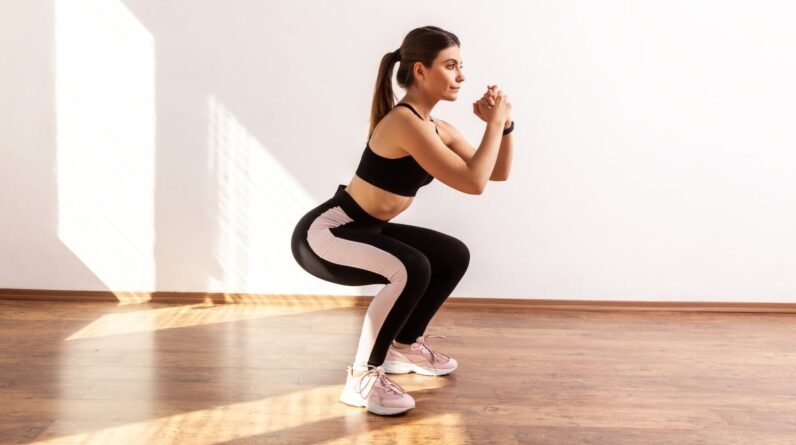
Do you want to lose weight but don’t know if you should run or walk? Know the difference between walking vs running for belly fat and which one is better.
When it comes to burning belly fat, the age-old debate of walking vs running often comes up. You might wonder—which one works better? Well, both running and walking are great cardio exercises that can help you shed those extra kilos, but they work in different ways. Walking is a low-impact exercise that is gentle on the joints, making it easy to perform. On the other hand, running is higher intensity that helps burn calories and improve stamina. But if you compare both exercises only from the perspective of weight loss, there may be a winner. So, let’s find out which is better between walking vs running to lose belly fat.
Walking vs running: Benefits of cardio exercise
Cardio exercise, also known as aerobic exercise, raises your heart rate and increases your breathing. Both walking and running are forms of cardio that help lose weight, improve cardiovascular health, and stamina, and may help you live longer, according to a study published in the American Society for Preventive Cardiology. However, walking vs running are different exercises and offer different sets of benefits as well.
Is walking an effective exercise?
This is a low-impact exercise, which makes it easier on the joints and is suitable for people of all fitness levels, including those who are beginners, older adults, or people with joint issues. It involves moving at a moderate pace, typically on foot. It can be done anywhere, requires no special equipment, and is easy to incorporate into daily life. Though it burns fewer calories per minute compared to running, it can still be an effective weight loss exercise, especially when practiced regularly. So, in the walking vs running debate, walking is good for those looking for an easier exercise.
Is running an effective exercise?
On the other hand, running is a high-impact, higher-intensity exercise that burns more calories per minute than walking. It involves moving at a faster pace than walking. The added intensity means that running can lead to greater cardiovascular fitness and higher calorie expenditure in a shorter amount of time. Running also activates a greater number of muscles, especially in the lower body, and helps to build strength and endurance and lower the risk of obesity, reveals a study published in the Journal of Physiological Anthropology. While running might seem more challenging, it can continue to burn calories even when you are resting, making it the best exercise between walking vs running.
You may also like



Can walking help you burn belly fat?
A daily stroll in the park may not be as intense as running, but it can still be one of the effective ways to burn calories and reduce fat, states a Western Journal of Medicine study. Walking helps create a calorie deficit—when you burn more calories than you consume—essential for weight loss. By walking for at least 30 minutes a day, you can increase your metabolic rate and continue burning calories even while at rest.
It is important to understand that fat loss occurs throughout the body, not from one specific area. This means losing belly fat can be more challenging, as it tends to be more stubborn. However, walking can help lower cortisol levels, a stress hormone linked to belly fat accumulation, as found in a study published in Current Psychology. In addition, walking has been shown to improve insulin sensitivity, according to research in the Journal of Applied Psychology. This improvement helps regulate blood sugar levels, reducing the likelihood that excess glucose will be converted into fat, thereby supporting weight loss.
What makes running better to burn belly fat?
Between walking vs running, running is a more efficient exercise for burning belly fat compared to walking. A study published in the Journal of Strength and Conditioning Research shows that running burns roughly twice the number of calories as walking. This high-intensity aerobic activity helps regulate appetite, reduce stomach fat, and promote weight loss.
Additionally, running offers the benefit of afterburn, or excess post-exercise oxygen consumption (EPOC), which means your body continues to burn calories at an elevated rate for hours after the workout. This effect is stronger after running than walking. As a result, running can be particularly effective for those looking to burn belly fat and lose weight quickly.
Walking vs running: Which is better?
While both are weight loss exercises that can help you lose fat, including belly fat, running is better than walking. However, before you pick one of these exercises, it is important to understand the pros and cons of walking vs running.
Walking
Pros:
- Lower impact on joints, making it suitable for people with joint problems or those new to exercise.
- Can be done for longer durations, potentially leading to a higher total calorie burn.
- Easier to integrate into daily life, like walking to work, using stairs, or walking during lunch breaks.
Cons:
- Burns fewer calories per minute compared to running.
- May require more time to see significant results if done at a moderate pace.

Running
Pros:
- Burns more calories per minute due to the higher intensity.
- Results in quicker weight loss and belly fat reduction.
- Increases cardiovascular fitness and endurance.
Cons:
- Higher impact on joints, which could be problematic for people with joint issues.
- May be harder to maintain for long periods, especially for beginners.
- Can increase the risk of injury if proper form and warm-up exercises are not followed.
So, if you are new to exercise, have joint problems, or prefer a lower-impact activity, walking may be the better choice for you between walking vs running. On the other hand, if you are looking for a more intense workout that burns more calories in a shorter amount of time, running may be the way to go.







